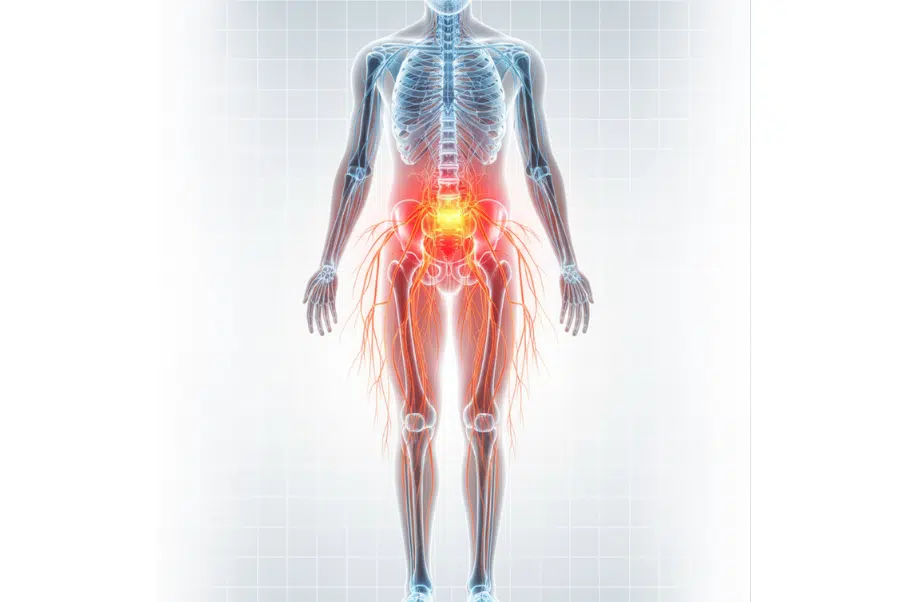When Back Pain Becomes Too Familiar in Yorktown
If your back, neck, or legs have been feeling off lately — maybe tingly, weak, or even a bit numb — you’re not alone. Many people in Yorktown, VA, especially around areas like Tabb, Grafton, or Kiln Creek, deal with symptoms that seem like “just part of getting older.” But here’s the thing — it’s not always age.
Sometimes, it’s something called spinal stenosis, and it’s sneaky. The condition narrows the space in your spine, which puts pressure on nerves and causes all kinds of uncomfortable sensations.
The symptoms of spinal stenosis Yorktown VA residents experience can start small — like a tingling leg during a morning walk near New Quarter Park — but grow into something that affects how you move, sleep, and live.
If that sounds familiar, keep reading. This guide breaks down seven symptoms you shouldn’t ignore — and what to do before it gets worse.
Get Back in Motion Sooner
At Back In Motion Chiropractic in Yorktown, VA, Dr. Christopher Connolly has seen how spinal stenosis quietly disrupts daily life — from sitting through a long workday to walking across the Yorktown Battlefield without pain.
The good news? You don’t have to live with it.
If you notice the signs we’ll cover below, there are gentle chiropractic options that can help you move easier and feel stronger again.
👉 Book an appointment today to get checked:
https://www.drchristopherconnolly.com/contact-us/
Understanding What’s Really Going On With Spinal Stenosis
Before diving into symptoms, it helps to understand what’s happening inside your body.
Your spine is like a protective tunnel made of bones. Inside that tunnel runs the spinal cord — a bundle of nerves that sends messages all over your body. Over time (or sometimes due to injury or arthritis), that tunnel starts to narrow.
That’s called spinal stenosis. When it happens, the nerves get squeezed. That pressure can cause pain, tingling, weakness, or numbness in your back, arms, or legs.
In Yorktown, many patients come in thinking it’s a pulled muscle or pinched nerve. But imaging or exams at Back In Motion Chiropractic often show that it’s something deeper — narrowing along the spinal canal that just keeps getting tighter.
Find Out What’s Causing Your Pain
Before you push through the pain, get answers first.
You can easily find Back In Motion Chiropractic right here in Yorktown:
📍 Address: 4102 George Washington Memorial Hwy, Yorktown, VA 23692
📞 Call: 757-234-6222
The 7 Symptoms of Spinal Stenosis You Shouldn’t Ignore
Below are seven real signs that spinal stenosis might be quietly developing. Each one tells your body’s story — and ignoring them only lets the pressure build.
1. Tingling or “Pins and Needles” in Your Legs

If your legs start to feel like they’re asleep, it might not just be poor circulation.
Many Yorktown patients with tingling legs actually have nerve compression from spinal stenosis.
It’s a sign that nerves in your lower back (lumbar spine) are being squeezed. Some people describe it as a buzzing feeling that travels from their hips to their feet — especially after standing for too long or walking around Yorktown Beach.
Chiropractic adjustments help by taking pressure off those nerves and restoring better movement through the spine.
2. Numbness in the Spine or Arms

When numbness spine Yorktown VA patients experience doesn’t go away after stretching or rest, that’s a red flag.
It usually means your spinal nerves are losing communication with parts of your body.
That can affect balance, coordination, and even grip strength. It’s scary — but manageable when caught early. Dr. Connolly often sees patients regain sensation and comfort through consistent, targeted care that focuses on improving alignment and flexibility.
3. Sharp or Radiating Nerve Pain

Nerve pain can be tricky. It can shoot down your leg, stab into your shoulder, or feel like an electric shock along your spine.
Nerve pain Yorktown VA patients often describe it as something that just “won’t quit.” It may worsen when standing or sitting for too long, then fade when leaning forward or lying down.
That’s because bending slightly opens up the spinal canal — giving those nerves a little breathing room. Chiropractic decompression and stretching therapies can help create that same relief naturally.
4. Weakness or Heavy Feeling in the Legs
Ever feel like your legs weigh a ton when walking from your car to the Yorktown Farmers Market? That’s often due to nerve compression limiting the signal flow between your brain and muscles.
If left untreated, it can lead to stumbling, imbalance, or difficulty climbing stairs. Chiropractic adjustments aim to restore nerve function so your legs feel stronger and more responsive again.
5. Lower Back Pain That Comes and Goes
This one’s common. Most people brush it off as “just getting older.” But persistent back canal narrowing Yorktown VA can make your back ache after standing or sitting for long periods.
Sometimes the pain improves when you bend forward or rest, but returns quickly when upright.
It’s a signal that your spine needs more space — not just painkillers. Gentle adjustments and therapy can help create that natural decompression over time.
6. Cramping or Tightness When Walking
If you feel a tight cramp in your calves or thighs after walking a short distance — and it goes away when you sit — that’s a big hint.
This symptom, called neurogenic claudication, happens when pressure builds on spinal nerves during movement.
At Back In Motion Chiropractic, patients often find that once that nerve pressure is eased, walking around Riverwalk Landing becomes enjoyable again.
7. Balance Problems or Coordination Changes
The spine plays a huge role in balance.
When it’s compressed, your body’s sense of position can get “confused.”
Many people notice small stumbles, trouble standing on one foot, or difficulty turning quickly.
These early warning signs Yorktown VA patients experience are subtle but serious — and shouldn’t be ignored.
Chiropractic adjustments and stability exercises help restore nerve flow and posture alignment, so your brain and body communicate better again.
Quick Look at 7 Spinal Stenosis Symptoms
| Symptom | What It Means | What You Can Do |
| Tingling Legs | Nerves compressed in lower back | Gentle chiropractic adjustments |
| Numbness | Reduced nerve flow | Schedule spinal evaluation |
| Nerve Pain | Pressure on spinal nerves | Spinal decompression therapy |
| Weak Legs | Limited nerve signals | Corrective care & alignment |
| Back Pain | Canal narrowing | Consistent chiropractic sessions |
| Cramping | Nerve pressure with movement | Posture-focused treatment |
| Balance Issues | Poor communication with brain | Core and stability work |
How Back In Motion Chiropractic Helps
Dr. Connolly and his team don’t rush treatments. Every plan starts with a clear assessment — posture checks, mobility testing, and often digital X-rays if needed.
Their approach is gentle and non-invasive, designed for real people living busy lives around York County. Whether you’re an office worker near Victory Boulevard or retired near Yorktown Beach, care plans focus on helping you do what you love without pain.
Many patients also learn simple home stretches and posture tips to prevent flare-ups between visits.
If you’re curious about how spinal stenosis develops, check out the blog:
👉 Spinal Stenosis Causes in Yorktown VA: 7 Hidden Reasons Behind Your Back and Neck Pain
Quick Summary
Spinal stenosis often starts quietly — with tingling, numbness, or pain that comes and goes. But as the spine narrows, those nerves get more compressed, and symptoms can grow worse.
Recognizing early warning signs is key. The sooner you get checked, the faster you can prevent long-term damage and feel like yourself again.
FAQs About Spinal Stenosis in Yorktown VA
1. What causes spinal stenosis in Yorktown residents?
Most often, it’s aging, arthritis, or disc changes that narrow the spine. Poor posture and repetitive strain can make it worse.
2. Can chiropractic care really help spinal stenosis?
Yes — gentle adjustments and traction help create space in the spine and reduce nerve pressure naturally.
3. What’s the difference between stenosis and a herniated disc?
A herniated disc is a single disc pressing on nerves. Stenosis is overall canal narrowing that can compress multiple nerves.
4. Is spinal stenosis permanent?
It depends on severity, but with consistent care and posture changes, symptoms can often be managed or reduced long-term.
5. Should I stop exercising if I have spinal stenosis?
Not at all — just focus on low-impact movement. Walking, swimming, and light stretching are great.
6. How is spinal stenosis diagnosed?
A chiropractor or doctor may use exams, imaging, or X-rays to confirm the cause of your pain.
7. When should I see a chiropractor for spinal stenosis?
If tingling, numbness, or weakness is affecting your daily life — don’t wait. The earlier, the better.
Conclusion: Don’t Wait Until It Gets Worse
Ignoring spinal stenosis doesn’t make it go away.
If you’ve been brushing off symptoms, take this as your sign to act.
Many people in Yorktown put up with pain because they think it’s just “getting older.” But spinal health doesn’t have to decline that way.
With the right care, mobility, and nerve flow, your body can start working like it should again.
Back In Motion Chiropractic helps people every week regain strength, comfort, and confidence in how they move. Don’t wait for things to get worse — start the recovery process today.
Final Call to Action: Book Your Appointment Now
Don’t keep wondering if your pain will pass.
Find out what’s really going on — and take the first step toward relief.
📍 Visit: 4102 George Washington Memorial Hwy, Yorktown, VA 23692
📞 Call: 757-234-6222
💻 Book Online: https://www.drchristopherconnolly.com/contact-us/
Whether it’s tingling legs, numbness, or nerve pain, Back In Motion Chiropractic is here to help Yorktown residents move pain-free again.

